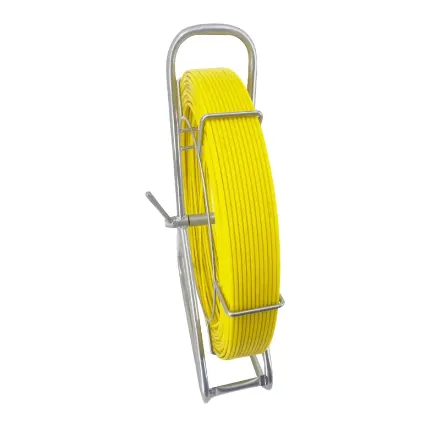
-
 Afriken
Afriken -
 Albanè
Albanè -
 Amarik
Amarik -
 Arab
Arab -
 Amenyen
Amenyen -
 Azerbaydjan
Azerbaydjan -
 Basque
Basque -
 Belarisyen
Belarisyen -
 Bengali
Bengali -
 Bosnyen
Bosnyen -
 Bulgarian
Bulgarian -
 Catalan
Catalan -
 Sebuano
Sebuano -
 Kors
Kors -
 Kwoasyen
Kwoasyen -
 Czech
Czech -
 Danwa
Danwa -
 Olandè
Olandè -
 angle
angle -
 Esperanto
Esperanto -
 Estonyen
Estonyen -
 Finnish
Finnish -
 franse
franse -
 Frisyen
Frisyen -
 Galisyen
Galisyen -
 Jòjyen
Jòjyen -
 Alman
Alman -
 grèk
grèk -
 Gujarati
Gujarati -
 Kreyòl ayisyen
Kreyòl ayisyen -
 Aoussa
Aoussa -
 Hawaiian
Hawaiian -
 ebre
ebre -
 Non
Non -
 Miao
Miao -
 Ongwa
Ongwa -
 Icelandic
Icelandic -
 igbo
igbo -
 Endonezyen
Endonezyen -
 Ilandè
Ilandè -
 Italyen
Italyen -
 Japonè
Japonè -
 Javanèz
Javanèz -
 Kannada
Kannada -
 kazak
kazak -
 Khmer
Khmer -
 Rwandan
Rwandan -
 Koreyen
Koreyen -
 Kurdish
Kurdish -
 Kyrgyz
Kyrgyz -
 TB
TB -
 Latin
Latin -
 Latvian
Latvian -
 Lityanyen
Lityanyen -
 Luxembourgish
Luxembourgish -
 Masedwan
Masedwan -
 Malgach
Malgach -
 Malay
Malay -
 Malayalam
Malayalam -
 Maltese
Maltese -
 Maori
Maori -
 Marathi
Marathi -
 Mongolyen
Mongolyen -
 Myanma
Myanma -
 Nepali
Nepali -
 Nòvejyen
Nòvejyen -
 Nòvejyen
Nòvejyen -
 Occitan
Occitan -
 Pashto
Pashto -
 Pèsik
Pèsik -
 Polonè
Polonè -
 Pòtigè
Pòtigè -
 Punjabi
Punjabi -
 Woumen
Woumen -
 Ris
Ris -
 Samoan
Samoan -
 Scottish Gaelic
Scottish Gaelic -
 Sèb
Sèb -
 angle
angle -
 Shona
Shona -
 Sindhi
Sindhi -
 Sinhala
Sinhala -
 Slovak
Slovak -
 Sloveni
Sloveni -
 Somalyen
Somalyen -
 Panyòl
Panyòl -
 Sundanese
Sundanese -
 Swahili
Swahili -
 Swedish
Swedish -
 Tagalog
Tagalog -
 Tajik
Tajik -
 Tamil
Tamil -
 Tatar
Tatar -
 Telugu
Telugu -
 Thai
Thai -
 Tik
Tik -
 Tirkmen
Tirkmen -
 Ukrainian
Ukrainian -
 Oudou
Oudou -
 Ouygur
Ouygur -
 Ouzbek
Ouzbek -
 Vyetnamyen
Vyetnamyen -
 Welsh
Welsh -
 Ede
Ede -
 Yiddish
Yiddish -
 Yoruba
Yoruba -
 Zoulou
Zoulou


May . 28, 2025 11:08 Retounen nan lis la
Choosing the Right Cable Pulling Tools for Your Project
Konpreyansyon Cable Pulling Equipment Needs
When planning any wiring or infrastructure installation, selecting the right zouti rale kab is essential for safety, efficiency, and long-term durability. Professionals and contractors rely on a variety of ekipman pou rale kab to handle the complexities of routing cables through walls, underground systems, or industrial sites. Among the most important tools are the winch pou rale kab, known for its ability to handle long distances and heavy loads with precision, and the cable hoist puller, which offers excellent leverage for more controlled, shorter pulls.

Before making a purchase, consider your project scale and frequency of use. For smaller or occasional tasks, a manual cable hoist puller may suffice. However, for larger installations or commercial work, investing in a high-powered winch pou rale kab ensures greater speed and efficiency. Some konpayi rale kab also offer equipment rental, which can be a cost-effective solution for one-time projects or tight budgets.
Where to Find the Best Fib Puller pou vann
Finding a high-quality raleur fib pou vann involves more than just a quick online search. It’s important to evaluate the supplier’s reputation, product specifications, and customer support services. Professional-grade tools must be durable, easy to maintain, and adaptable to different environments. Reputable konpayi rale kab often provide warranties, technical guidance, and replacement parts to ensure long-term value.
When searching for a raleur fib pou vann, prioritize vendors who understand the complexity of modern installations. Whether you’re working on fiber optic networks or standard electrical cabling, having the right zouti rale kab can drastically reduce labor time and avoid damage to cables or conduits.
In conclusion, whether you're expanding a fiber network or handling a residential project, investing in the right ekipman pou rale kab—from a robust winch pou rale kab to a reliable cable hoist puller—is a critical step in ensuring success. Partnering with experienced konpayi rale kab or selecting the right raleur fib pou vann can make all the difference in your project's outcome.
Dènye nouvèl
Hydraulic Crimping Tool – Precision & Heavy-Duty Speed
NouvèlNov.05,2025
Cable Pulling Swivel | High-Strength, Anti-Twist, Stainless
NouvèlNov.04,2025
Cable Pulling Tools – Pro-Grade, Safe, Fast Install
NouvèlNov.03,2025
Hydraulic Crimping Tool – Fast, Precise, Quick-Change Dies
NouvèlNov.02,2025
Hydraulic Crimping Tool for Sale | Fast, Precise, Heavy-Duty
NouvèlNov.01,2025
Duct Rodder for Sale – Non-Conductive, Durable Fiberglass
NouvèlOct.31,2025








